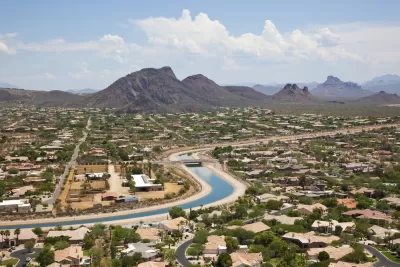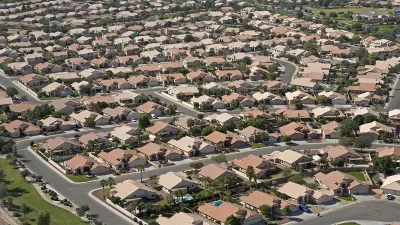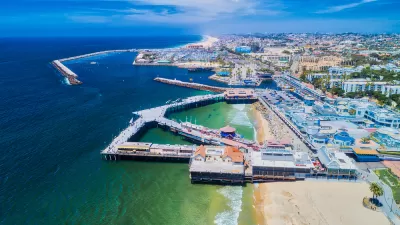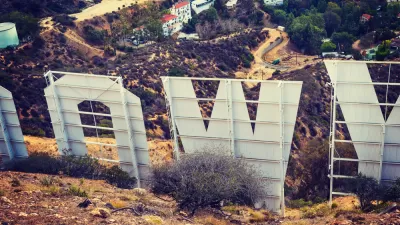There is still time to reverse the environmental outcomes of American suburbs. Researchers in Los Angeles, considered by many to be the poster child for U.S. sprawl, have been at work on the problem for years.

“Currently, the sprawling outer areas of US cities are environmentally unsustainable and a wasteful use of land,” begins a provocative article by Dana Cuff, a professor of architecture and urban design at the University of California, Los Angeles (UCLA).
Among the complaints about the U.S. suburban proclivity, Cuff lists “ social stratification and an unequal distribution of wealth and opportunity,” greenhouse gas emissions, long commute times, congestion, high infrastructure costs, and high housing costs.
“But even US suburbs are not beyond redemption,” writes Cuff to switch to a more optimistic note about the potential for suburban redemption.
Promoting ideas explored by over a decade of work at cityLAB, a urban-design research center at UCLA, to solve the problems of sprawl in Southern California. Among the prescriptions offered here are a call to change the rules about what can be built and where (“Three-quarters of residential areas in US cities are designated as ‘single family’, meaning that just one house can be built on each plot”) as well as parking requirements.
Cuff also argues for the use of state law to preempt local zoning regulations, writing: “My research indicates that well-designed state laws on land use can boost public benefits while allowing local jurisdictions to adjust projects to local needs. For example, cities with relatively large houses or small plots could customize laws to allow secondary units to be carved out of existing homes.”
The source article, linked below, concludes with a series of questions recommended by Cuff to begin to address the poor environmental outcomes of suburbia.
FULL STORY: Suburbs are a climate disaster, but they can be redeemed

Study: Maui’s Plan to Convert Vacation Rentals to Long-Term Housing Could Cause Nearly $1 Billion Economic Loss
The plan would reduce visitor accommodation by 25,% resulting in 1,900 jobs lost.

North Texas Transit Leaders Tout Benefits of TOD for Growing Region
At a summit focused on transit-oriented development, policymakers discussed how North Texas’ expanded light rail system can serve as a tool for economic growth.

Using Old Oil and Gas Wells for Green Energy Storage
Penn State researchers have found that repurposing abandoned oil and gas wells for geothermal-assisted compressed-air energy storage can boost efficiency, reduce environmental risks, and support clean energy and job transitions.

Santa Barbara Could Build Housing on County Land
County supervisors moved forward a proposal to build workforce housing on two county-owned parcels.

San Mateo Formally Opposes Freeway Project
The city council will send a letter to Caltrans urging the agency to reconsider a plan to expand the 101 through the city of San Mateo.

A Bronx Community Fights to Have its Voice Heard
After organizing and giving input for decades, the community around the Kingsbridge Armory might actually see it redeveloped — and they want to continue to have a say in how it goes.
Urban Design for Planners 1: Software Tools
This six-course series explores essential urban design concepts using open source software and equips planners with the tools they need to participate fully in the urban design process.
Planning for Universal Design
Learn the tools for implementing Universal Design in planning regulations.
Ascent Environmental
Borough of Carlisle
Institute for Housing and Urban Development Studies (IHS)
City of Grandview
Harvard GSD Executive Education
Toledo-Lucas County Plan Commissions
Salt Lake City
NYU Wagner Graduate School of Public Service





























